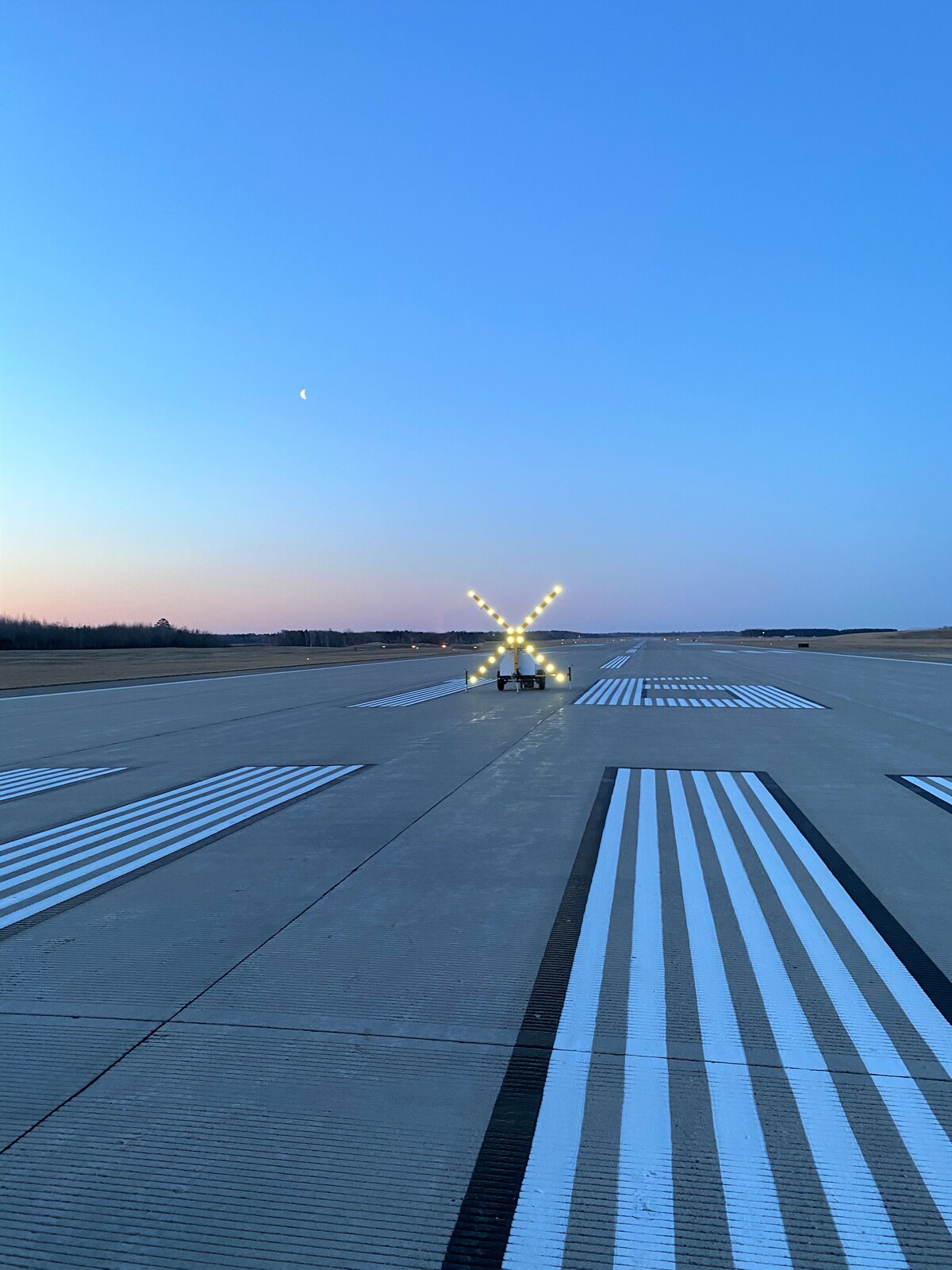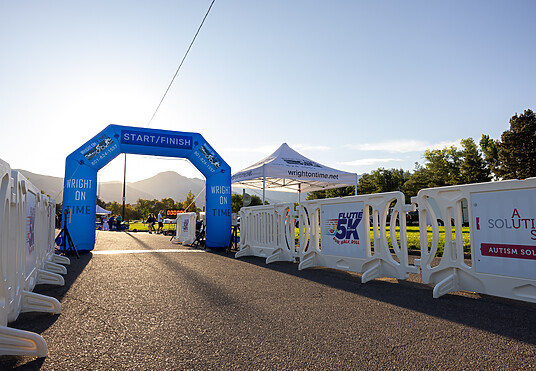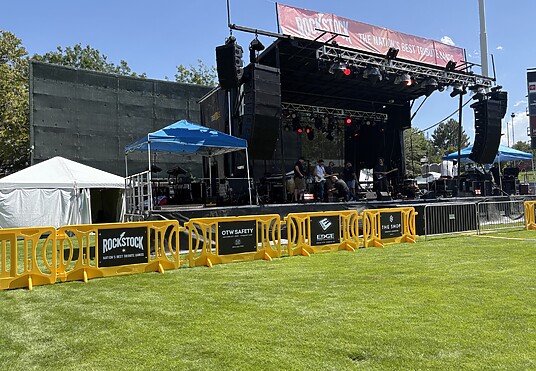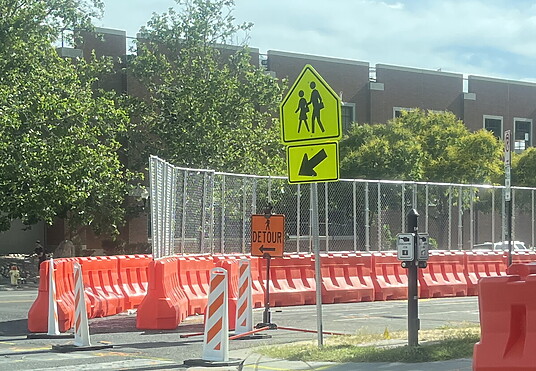Your Guide to Airport Closure Markers

You’re flying into your local airport and see a plethora of flashing lights, colors, and signs out your window… but what do they mean? To the average traveler, that abundance of visual stimuli might not mean much, but to the men and women in the cockpit, each element speaks a thousand words. Not only that, but visual aids like these significantly increase the safety of those working in service on the airfield as well!
Flashing colored lights determine what type of airport a plane or helicopter is approaching, like a heliport, civilian airport, water airport, or military airport. Different variations of line markings delineate what type of runway or taxiway is being approached. Guidance signs can be found when important information needs to be communicated consistently to every plane in the air, and closure markers (the question we’re here to answer!) stretch (or flash) across closed runways.
So what is a [temporary] closure marker?
In layman’s terms, these giant “X” shapes are visual aids used to alert pilots that a runway is closed. The FAA has specific requirements about the identifiers used to mark closed runways under construction – whether a new runway, one temporarily closed for regular maintenance, or one that has been permanently retired – so these markers are created specifically for the purpose of indicating such things.
The size and color (both determined by the FAA) of airport runway closure markers clearly indicate to pilots that whatever runway is marked is not safe for landing. An airport might choose to use a classic Vinyl X runway closure marker and tack it to the runway, or they might choose something like the Lighted X runway closure marker, which emblazons the closed runway with a giant “X” of light. We’ll discuss both options here, and, for those in the airport industry, help you decide which is the right fit for your application.
What are the set of standards temporary closure markers must meet?
To maintain the highest levels of safety, temporary closure markers should be designed to comply with relevant FAA regulations (FAA Advisory Circular No: 150/5370-2G, Advisory Circular No: 150/5340-1M, and Advisory Circular No: 150/5390-2C), among others.
The FAA requires that temporarily closed runways and new, unopened runways use a yellow X on each end of the runway. These markers are also used at the entrance to closed taxiways and over the “H” for heliport closures. While a raised, lighted X is the preferred option, a yellow X marker made of easily removable material, such as vinyl, is also acceptable. An optional back border can be added to make this option even more visible.
What types of closure markers are available on the market?
The LED Lighted X Closure Marker
While this option may be referred to as temporary, it is designed to function long-term!
Our Lighted X boasts bulbs with a 50,000-hour LED lifespan, which essentially eliminates the need for replacement. On a full tank of fuel, the engine will provide up to 140 hours of continuous operation, and, even after the gas runs out, the battery will keep the power on for up to 24 hours.
For durability, the Lighted X is powder-coated to resist the elements, and the temperature operation limits spanning 0 degrees to 140 degrees Fahrenheit (on engine power) mean that they can run in almost any weather. They are also wind-tested to 95 MPH, which passes compliance for jet-blast testing (and any sort of gale).
Visibility-wise, the Lighted X is visible from 10-25 miles away, depending on the time of day and the weather. This notifies pilots of the hazard of a closed runway well in advance. The high-efficiency LED bulbs provide bright, highly directional light, and power on to full brightness immediately.
Per the FAA, the Lighted X is the preferred option for marking closed runways due to its raised, lighted arms and excellent visibility. Still, a bright yellow ground marker is also acceptable.
Vinyl X Temporary Closure Marker
Where the Lighted X is raised and lit with LED bulbs, the Vinyl X Closure Marker lacks lights, but lays flat on the ground and is easily visible from above. At a tall 60 feet long by 10 feet wide, this airfield closure marker is sure to draw eyes and ensure that pilots know that a runway is closed. Smaller sizes (generally 5 feet by 30 feet) do exist for taxiways as well, but they are not ideal for active runways due to their size and decreased visibility.
Made of polyethylene, this bright yellow marker is secured to the runway it is marking with plastic grommets (premium version) and/or stakes. The 1.8 mil. thick vinyl is tear and acid-resistant, waterproof and mildew-proof, and has hems reinforced with poly twine, making it highly durable. While they can be used alone, sandbags are recommended in order to make the Vinyl X as secure as possible (just request to purchase them alongside your Vinyl X order!).
Just like the Lighted X, the Vinyl X conforms to FAA AC 150/5340-1M and 150/5370-2G requirements and is made in the USA.
Why are runway closure markers so important?
While marking a closed runway might seem like a rote part of setting up an airport construction site, there can be dire consequences if this crucial step is skipped.
Failing to clearly indicate a runway closure can result in tragedies like the Western Airlines Flight 2605 in 1979 that crashed at Mexico City International Airport after landing on a closed runway in the fog. The closure was not visible through the haze, and, due to miscommunication and misunderstanding between air control and the pilots, the plane landed on the wrong runway. 72 of the 89 people on board were tragically killed, including a maintenance worker on the ground when the aircraft struck his vehicle.
More recently, an Iraqi Airways Boeing 737-800 was reported to have landed on a closed runway in Tehran. They were cleared to land on one runway but accidentally landed on another instead. While there were no injuries reported and the plane was able to land unscathed, this situation would have been alleviated if the runway had been clearly marked for closure.
Lastly, a Ukrainian plane landed at the Zaporizhia airport in 2017. It reportedly taxied through wet concrete due to a supposed failure to mark the runway as still under construction, and, thus, closed. The airline stated that the wet concrete ruined the plane’s fuselage and the landing gear, yet the airport denied all claims. Regardless, a runway closure marker (or two) would have prevented such a dispute in the first place.
Accidents like these can not only be tragic, but they cost airports billions of dollars in repairs and reparation. Flying Object Debris (FOD) costs over four billion dollars some years, and that’s potentially only for a single airport. Using proper hazard markings, including airport closure markers, can greatly decrease the amount of money an airport must expend on repairs for aircraft, runways, and more. Having closure markers on hand is incredibly important for preventing aircraft from landing on unsafe, FOD-laden runways.
So what are our key takeaways?
Lighted X versus the Vinyl X
Per the FAA, a raised, lighted closure marker (aka the Lighted X) is the preferred option to mark closed runways when at all possible. It is better for overall visibility, and it will stand the test of time for construction teams or airports undergoing regular construction and expansion projects.
The Lighted X is more of an investment, but It’s a product that is built to last! With its long-lasting LED bulbs, easy maintenance and setup, and the amount it increases airport runway safety, it will quickly make up its return on investment.
The Vinyl X is an excellent product for airports who are looking for more of a budget option. Bright and durable, the Vinyl X is the perfect choice for smaller or temporary projects, or if a quick solution is needed. As it is a giant, flat piece of polyethylene plastic, it does have the potential to blow in the wind (or jet blast) even when secured to a runway, so we recommend having sandbags on hand to ensure the Vinyl X is as secure as possible.
OTW is committed to safer runways everywhere.
Both options are fully FAA-compliant and add to the safety of the airfield, so, depending on the situation and location, we are happy to recommend either to airports looking for a runway closure marker solution. Our goal is to increase the safety of individuals everywhere, including at construction sites and closed runways at airports across the nation (and globally too!).
Ready to invest in better airport safety?
Give our experts a call to guide you through the decision-making process, and we’ll set you up with the best safety solution for your application.


